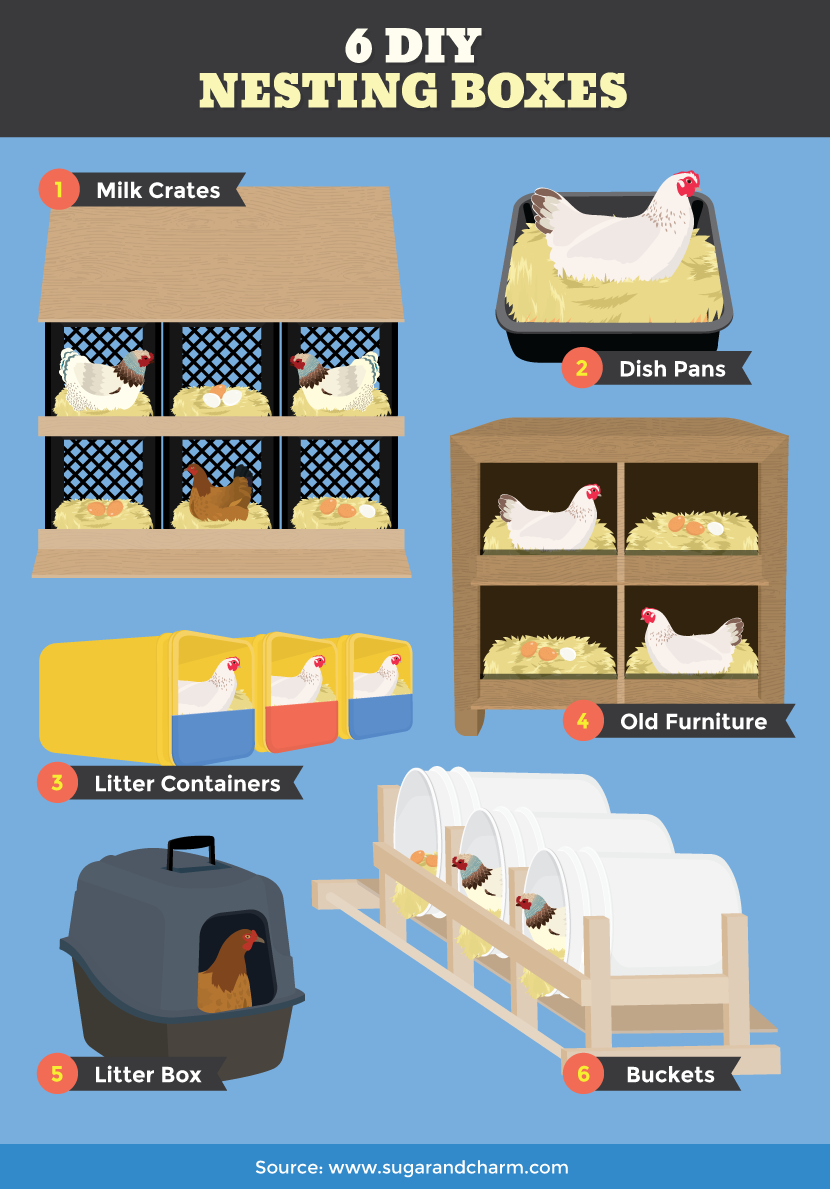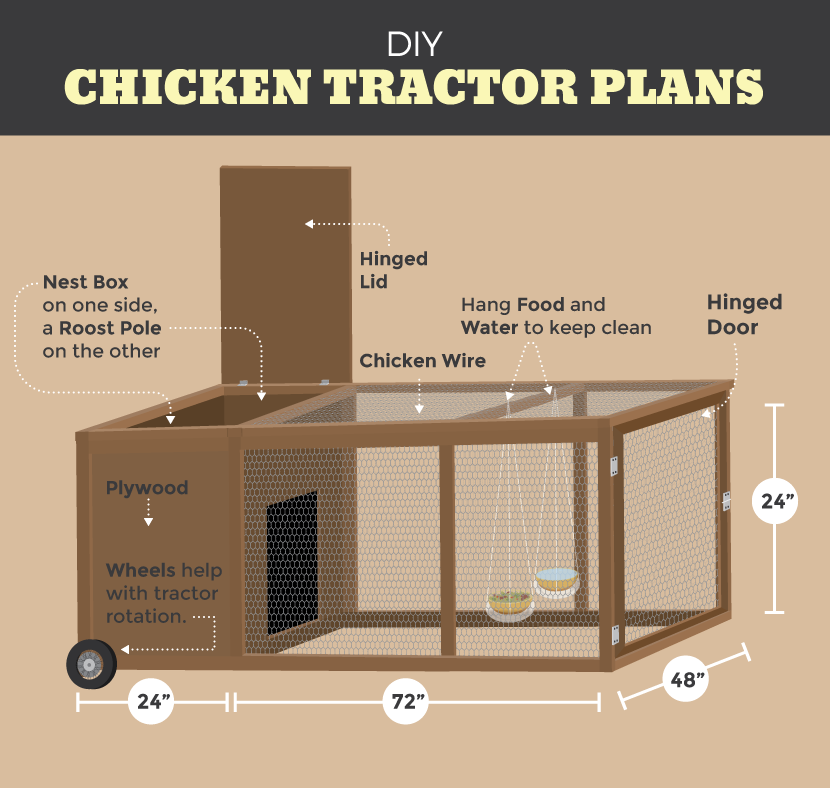
Get your fix of expert articles delivered straight to your inbox!
No Thanks - I don't like cool stuff

The recent trend of urban and suburban home owners keeping backyard chickens sparked our interest in placing a chicken tractor on our property. A chicken tractor is, for all intents and purposes, a portable chicken coop. It can come in many different shapes and sizes. It is an ideal option for backyard chicken owners, and houses up to four chickens. The chicken tractor suits backyard chicken owners superbly because it meets several needs: it can fit into a small space, be easily manoeuvred, and is low maintenance as well as a time saver.
Before building your own DIY Chicken Tractor, you must assess the layout in your backyard and determine where the roosting and sleeping areas will be. Other important factors are the long-term durability of your DIY materials and your level of investment going forward.

Nesting boxes are a key, since this is where the fresh eggs that everyone hopes and plans for are laid, yielding that ever-anticipated meal right from your very own backyard! Chickens need to have plenty of room to nest, so size is very important. The nesting box should be approximately 12” X 12” X 12”. Going bigger is not a bad idea because if the nesting box is not comfortable for the chickens they will lay their eggs elsewhere. More often than not, even if you have two nesting boxes in your chicken tractor design, all the chickens will favor one box over another. In some cases a chicken will create her own nest below the nesting box or wherever else she can gain access to.
For the backyard chicken owner, convenience is paramount. It is helpful if the chickens lay their eggs where you designate so an egg hunt does not ensue. Many people use shredded paper or pine shavings for nesting material, some use cloth, and others purchase commercial nesting pads. Straw is the ideal nesting material and is most commonly used because it is inexpensive. But some chicken owners do not use any nesting materials at all.
One important design consideration is that not all chickens are the same size. Many breeds run similar in size but other breeds of chickens have “giants.” The tractor should be modified to accommodate the largest of your breeds. This tractor design is based on the average chicken size: 16” tall and weighing approximately 3.5 to 6 lbs. Keep in mind that chickens can make themselves small to escape certain areas or to get to the garden for some fresh plants or weeds.

The roost is where chickens sleep. This area is essential to the well-being of chickens, but typically the only time you will find a chicken on the roost is when she is sleeping, unless you have a roosting area outside in a run or in the coop area. The roosting bar should be at least 10” off the ground, especially in the close quarters of this particular design. It is designed to keep them warm while roosting with their fellow feathered friends. The roosting bar should not be too high; you should be able to shut the lid at night with some head room left for them. The roosting bar needs to be a diameter of at least 2” wide, preferably 4” wide, because chickens actually like to sleep flat-footed—it keeps their feet warmer. The roost also has to be able to hold all of the chickens at once; this design allows three to four chickens to roost comfortably.
The run area attached to the coop is where the water and food for the chickens is, as well as an area for them to scratch. It encompasses an area about 72” long by 48” wide by 24” tall. There should be enough room that you can throw in grit, oyster shells, weeds, and greens from the yard, and there is room for the chickens to move around. This area benefits greatly from a “rain flap” installed over the top to keep the food dry and the water fresh, which is healthier for your chickens. In this design a piece of canvas fabric with grommets in it was secured to the top to keep the chicken feed nice and dry. The canvas fabric was cut to approximately 24” by 48”. It doubles as a nice shade cover too.

In a standard chicken coop that is immobile, a chicken needs a minimum of two square feet in the coop and eight square feet for the run area. Since this is a mobile design and can easily be attached to a run, it’s actually a more beneficial environment for a suburban or urban backyard chicken. Optionally this tractor can be attached to another outdoor run area for more freedom for your chickens as well as moved around the yard for chickens to graze on bugs, weeds, grass, and other nutritious snacks throughout the day.
This is where having chickens in a mobile coop is hugely advantageous to the backyard gardener because this set-up protects the gardens. Because you can move your chickens easily around the yard, they will have plenty of access to fresh grass, weeds, and more. The gardener will have access to fresh chicken manure to be added to the compost pile. Chickens love to feed on weeds, so they can be tossed into the coop or run and they will happily nibble.
All areas of the chicken tractor should lock and be secure every night. The run attached to the coop has a lock and the opening to the nesting boxes secure as well. In this design a window sash lock was used to lock the cover to the nesting boxes and a hook and eye secures the run.

In conclusion, the DIY Chicken Tractor can be a welcome addition to any urban, suburban, or even rural environment. The advantages are that it’s easy to manoeuvre, it protects your gardens, and it offers a plentiful diet to your poultry. The tractor also offers ease of use to the backyard chicken owner, and the collection of eggs is a simple affair: just scoop the eggs out. And you’ll find it offers the peace of mind of knowing your chickens are fairly secure at night.
Written by:

Get your fix of expert articles delivered straight to your inbox!
No Thanks - I don't like cool stuff